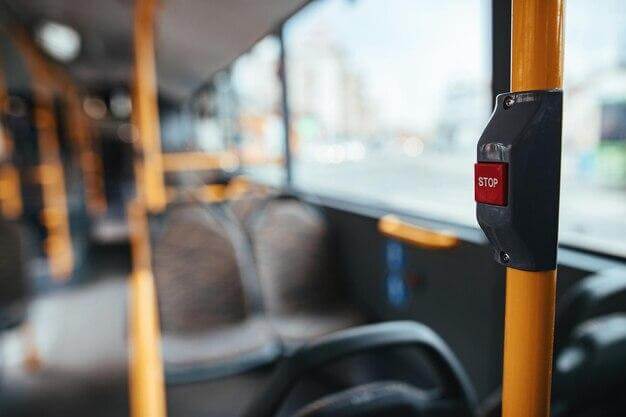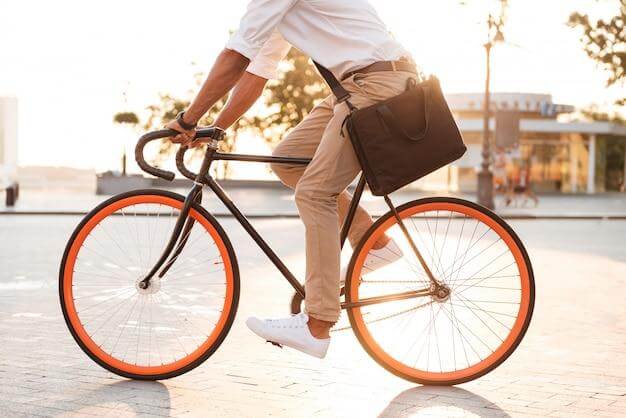According to the Federal Statistical Office in 2021, around 740 million tonnes of CO2 were caused by road traffic – an increase of 21% compared to 1990. However, in order to achieve the climate targets of the Paris Agreement, a reduction of 90% compared to 1990 levels would be necessary by 2050. Road transport plays a decisive role in this: cars are responsible for 12% of the EU’s total CO2 emissions.

In other words, something has to change, and quickly. Various measures are being discussed under the term “transport transition” in order to still be able to achieve the agreed climate targets. As an interim step, the EU plans to reduce emissions from cars by at least 55% by 2034.
The Federal Environment Agency explains the four cornerstones of the strategy to achieve these targets: Traffic is to be avoided, shifted to more environmentally friendly means of transport, energy efficiency is to be increased, and emission-free substances and electricity are to be used instead of fossil fuels.
It is emphasized that avoiding traffic should not mean driving bans or the like – rather, in the long term, better traffic planning and more practicable settlement structures, for example, should ensure that less traffic is necessary, but that mobility is maintained at the same time.
The importance of expanding public transport for sustainable mobility
Local public transport is sometimes referred to as the “backbone of the mobility transition” – and rightly so. However, improvements are needed in many areas to make buses and trains a real alternative, for example for commuters who previously travelled by car.
A survey conducted by the ADAC in 2023 showed that, from the population’s point of view, the most important measure in the area of public transport is the improvement of services in rural areas. According to a survey commissioned by the vzbv, punctuality and reliability, information in the event of disruptions, transparent fare systems and closely timed services are also very important to consumers.

A study by DB subsidiary ioki from 2021 came to the conclusion that the necessary expansion of public transport is not necessarily to be understood in spatial terms: there are basically enough stops, but there is a lack of service in rural areas. As a possible solution, ioki suggests a larger on-demand public transport service (e.g. on-demand buses).
At the same time, it should be borne in mind that an expansion of local transport services incurs immense costs. According to estimates by the German Institute of Urban Affairs, the maintenance and expansion of rail networks, roads and paths is expected to cost around 372 billion euros by 2030. As property developers and operators of municipal transport companies, local authorities are demanding support from the federal government in order to be able to afford this at all.
In addition to vehicles, sufficient personnel will also be needed – the Alliance for a Socially Responsible Mobility Transition (with the participation of BUND, NABU and the trade union ver.di, among others) draws attention to this in its brochure published in 2021, outlining various factors.
Electric buses in Germany: opportunities and challenges
The switch from fossil fuels to e-mobility in particular is already clearly visible in German city centres: according to a study by PwC, there were 1269 electric buses on German roads in 2021, almost twice as many as in the previous year. A particularly large number of electric vehicles are in use in North Rhine-Westphalia, Hesse and Hamburg. Nevertheless, electric buses still only account for around 2.4 per cent of the total number of buses used in public transport.
According to Transport Minister Volker Wissing, every second city bus should be electric by 2030. The EU’s Clean Vehicles Directive also stipulates minimum quotas for “clean” buses, provided that the vehicles are newly purchased.
Subsidies are also urgently needed here, as an electric bus initially generates high costs, particularly when it is purchased, and is around 2.5 times more expensive than a diesel-powered vehicle. In addition, the infrastructure for charging the vehicles needs to be expanded and some processes need to be adapted to electric operation.

Local transport companies are being supported in their transition by various funding programmes and research projects from the Federal Ministry for Digital and Transport, for example through the electric mobility funding guideline. Although there were already almost twice as many funding applications for the switch to electric vehicles in 2022 as there were funds available for approval, the budget was not increased in 2023. According to the VDV industry association, the targets defined for 2030 cannot be achieved in this way.
Bicycle-friendly cities: promoting cycle paths and infrastructure
Of course, the good old bicycle is even more environmentally friendly than switching from car to bus. An EU comparison shows that Germans are generally keen on cycling: Germany ranks 6th among the countries with the most cyclists.

However, we are not particularly happy when it comes to cycling: in the ADFC “Cycling Climate Test” from 2022, the cycling climate in Germany was rated 3.96 by the participants. Major points of criticism were the lack of infrastructure (e.g. wide cycle paths) and the sometimes low level of safety when cycling. Survey results from 2019 and 2021 show: While only 51% “mostly” felt safe when cycling in 2019, this figure was at least 61% in 2021. Nevertheless: 30% of respondents still felt “not very safe”.
The small town of Wettringen, which is highlighted as a positive example in the bicycle climate test, tells the Tagesschau how good conditions for cyclists can be achieved: Cycle paths are included as a matter of course in the networking of settlements, there are wide and illuminated paths as well as special regulations that give bicycles priority in traffic and avoid conflicts with motorists. Participants in the ADFC survey also praised, for example, rental bike systems and the possibility of taking bikes on public transport where available.
There is also support from the federal government here, e.g. for the expansion of the cycle path network, for bicycle car parks and for the promotion of pilot projects. In terms of safety, the equipping of motor vehicles with turning systems to make cyclists more visible at junctions may also be eligible for funding. However, the planned cuts for 2024 have also been criticised with regard to funding for the promotion of cycling; the ADFC believes that the climate targets for 2030 are also at risk here.
Local public transport: attractive offers and fare structures for commuters
The summer of 2022 brought rail travellers (and those who wanted to become one) an unprecedented sensation: regardless of national borders, entangled network fare systems and special weekend regulations, it was possible to travel throughout Germany with the 9-euro ticket. The extent to which the ticket also had a positive impact on the climate remains controversial: did not travelling by car save 180 million tonnes of CO2 or only 205,000 to 671,840 tonnes? Ultimately, too many factors play a role to assess this with certainty in hindsight, in particular the short period of availability and the travel-friendly season.
However, one thing is clear: every reduction and simplification in the jungle of public transport fares is welcomed (especially by commuters). According to an analysis of mobility data from mobile phone provider O2 Telefónica, the Germany Ticket for 49 euros is said to have led to a “noticeable shift from road to rail”.
Long-distance travellers can also save a lot of money and make their journey to their holiday destination more environmentally friendly by booking in advance and taking advantage of special prices – tips are provided by the Federal Environment Agency, for example.
But no matter how cheap the journey is, you have to arrive at your destination reliably, and ideally on time. Good fare structures alone cannot compensate for the existing need for rail transport reform.
Mobility of the future: synergies between public transport and cycling
Achieving sustainable mobility is a multi-faceted endeavour that requires measures in a wide variety of areas. This can – and should – result in synergy effects. The draft European declaration on cycling, for example, provides for the creation of “more synergies between cycling and other modes of transport”, “such as the possibility of transporting more bicycles on buses and trains and the provision of secure bicycle parking facilities at railway stations and mobility centres”.
According to a study by TU Dresden, the joint use of bicycles and public transport has been rather low to date. Statistically, people are much more likely to make the journey to the station on foot.

Anyone who often travels by bus and train knows from their own experience that there is room for improvement when it comes to taking bicycles on board. The federal government also recognises the “considerable potential for conflict” between the different usage needs of passengers in multi-purpose compartments. The national cycling plan from 2020 therefore proposes expanding the range of rental bikes available at railway stations as an alternative to bike sharing.
Conclusion
Just like on the road to sustainability in other sectors, there is still a lot to be done with regard to the mobility transition. Short-term measures such as cheaper rail ticket prices interact with very long-term projects such as the expansion of various areas of transport infrastructure. In addition, rural and urban regions sometimes have very different starting conditions and therefore very different needs for measures. However, we can all benefit in the end: not only through cleaner air, but perhaps also through less stress. After all, travelling by car is said to be the most stressful of all commuting options…


